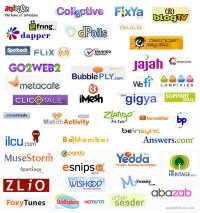
At work early. Coffee, check. Bran muffin, check. Open Parallels then Outlook…will it work on the first try, check. Whoa, what’s this? A half-dozen “business proposals” from London and several people in South Africa who I don’t know are waiting for my “urgent reply” with my bank account number… I hate SPAM!
It got me to thinking about what day of the month is best to send an opt-in email message or newsletter? Opt-in isn’t SPAM…it’s “permission based marketing” using email!
I’ve done a little research on the topic and what I’ve learned is that most opt-in emails are sent out on the 16th of the month. However, most are opened on the 25th and then the 27th. Most emails are sent on Tuesdays… but emails are most often read on Sundays (followed by Mondays and Wednesdays). It’s also interesting to note that the data shows most emails are opened around 11:00 p.m. at night – huh?!
I was curious how gender impacts opt-in behavior? Studies have shown that men are more likely to unsubscribe or just delete newsletters they deem as “too frequent”. In fact, 60% more likely than women. If the content is solid, women will respond better to more frequent contacts – weekly as opposed to monthly. Whereas, men respond better if the contact is monthly.
So how do the various Industries compare at opening those opt-in emails?
– Education = 62%
– Networking Orgs. = 59.7%
– Insurance = 55.3%
– Nonprofits = 53.4%
– Travel = 48.5%
– Com. Real Estate = 46.8%
– Business Consulting = 46.7%
– Sports = 46%
– Manufacturing = 40.5%
– Training = 38.2%
– Res. Real Estate = 36.5%
– Software/IT = 30.8%
– Ad/PR = 30.7%
– Medical = 30.4%
– Food Service = 23.9%
– Law = 20.4%
How is this data known? Thanks to those technical programming teams we’ve made significant advances in email tracking functions. It’s called “Visitor Paths” — it creates a comprehensive matrix of starting and destination pages on your websites. These tracking functions were specifically developed for clients who are world-wide marketing companies.
Why? Email marketing is second only to search marketing as the most effective online marketing tactic. I don’t like it, but companies want to raise the open rates on those opt-in emails.
The opt-in and email security products business is large. IT is faced with the monumental task of managing and protecting our mission-critical networks from Internet threats while at the same time making “reputation filters” which allow opt-in mail and block spam by scrutinizing a sender’s record.
Not convinced? In January, Cisco Systems Inc. purchased IronPort Systems Inc. for $830 million. IronPort are pioneers in Internet messaging. They focused on unique technologies such as SenderBase and AsyncOS and have a large technical staff from companies such as Hotmail, eGroups, ListBot, and Yahoo! The company that routes our packets is now in the business of managing the “reputation filter”…isn’t that the equivalent of the fox in the chicken coop?!
So, the next time you open that Cancer Foundation email/newsletter or RSS web feed…who is tracking who?
Sources:
CAUCE – Coalition Against Unsolicited Commercial Email
The CAN-SPAM Act – Controlling the Assault of Non-Solicited Pornography and Marketing Act
Wikipedia – Email marketing
IronPort – Security and defending solutions
CoolerEmail – Opt-in messaging solutions
Read Full Post »
 Many of my RSS feeds and blogs I read there is technology and innovation coming out of Israel in a big way. It’s difficult to keep up with the reports on technologies, acquisitions and new startup companies that seem to happen there weekly. What’s the deal? I did a little research to look behind the scenes and try and understand the incredible start-up success rate in this country.
Many of my RSS feeds and blogs I read there is technology and innovation coming out of Israel in a big way. It’s difficult to keep up with the reports on technologies, acquisitions and new startup companies that seem to happen there weekly. What’s the deal? I did a little research to look behind the scenes and try and understand the incredible start-up success rate in this country. Ran across a new social network for those involved in real estate, at pretty much every level of involvement. Called the
Ran across a new social network for those involved in real estate, at pretty much every level of involvement. Called the 


